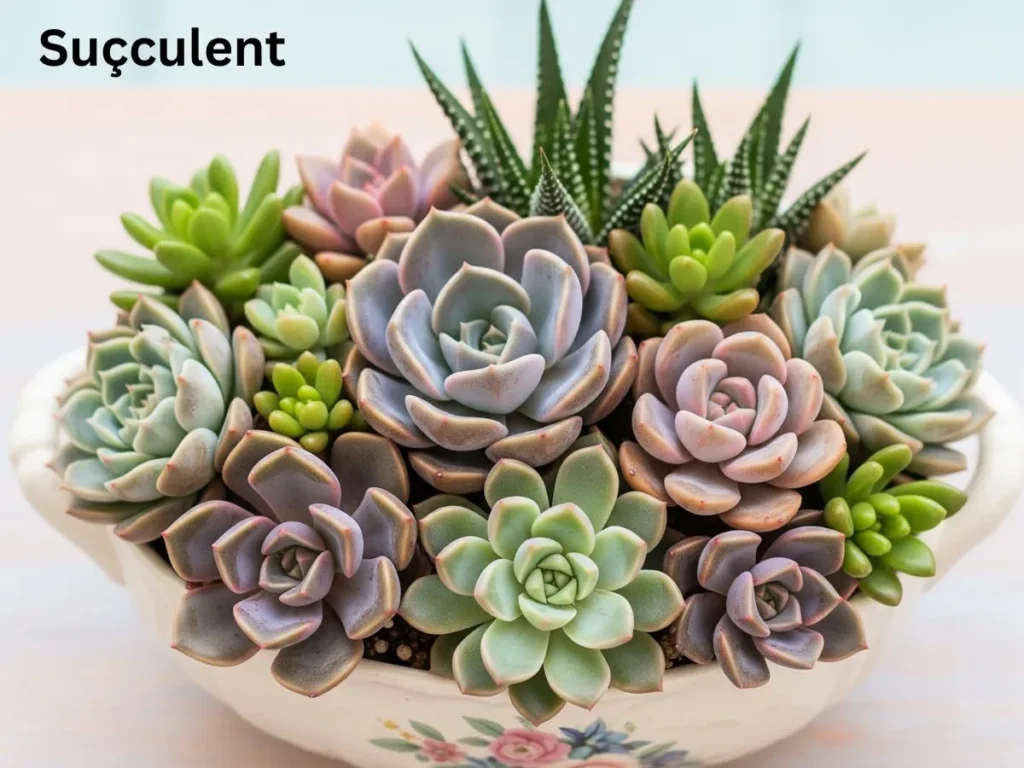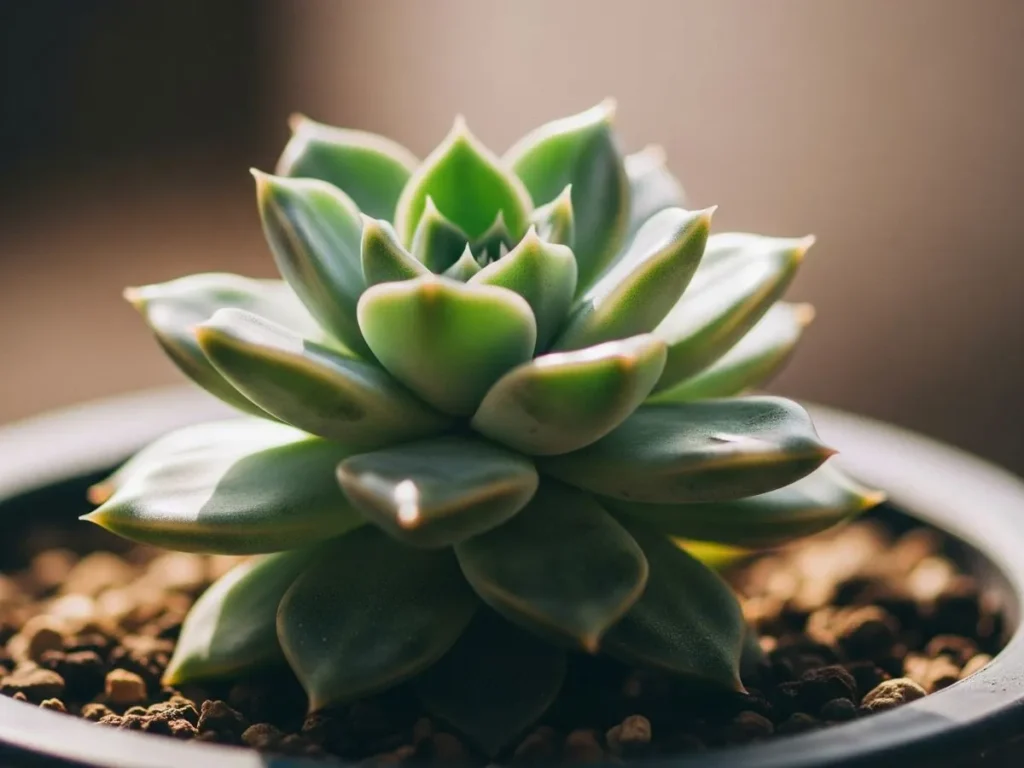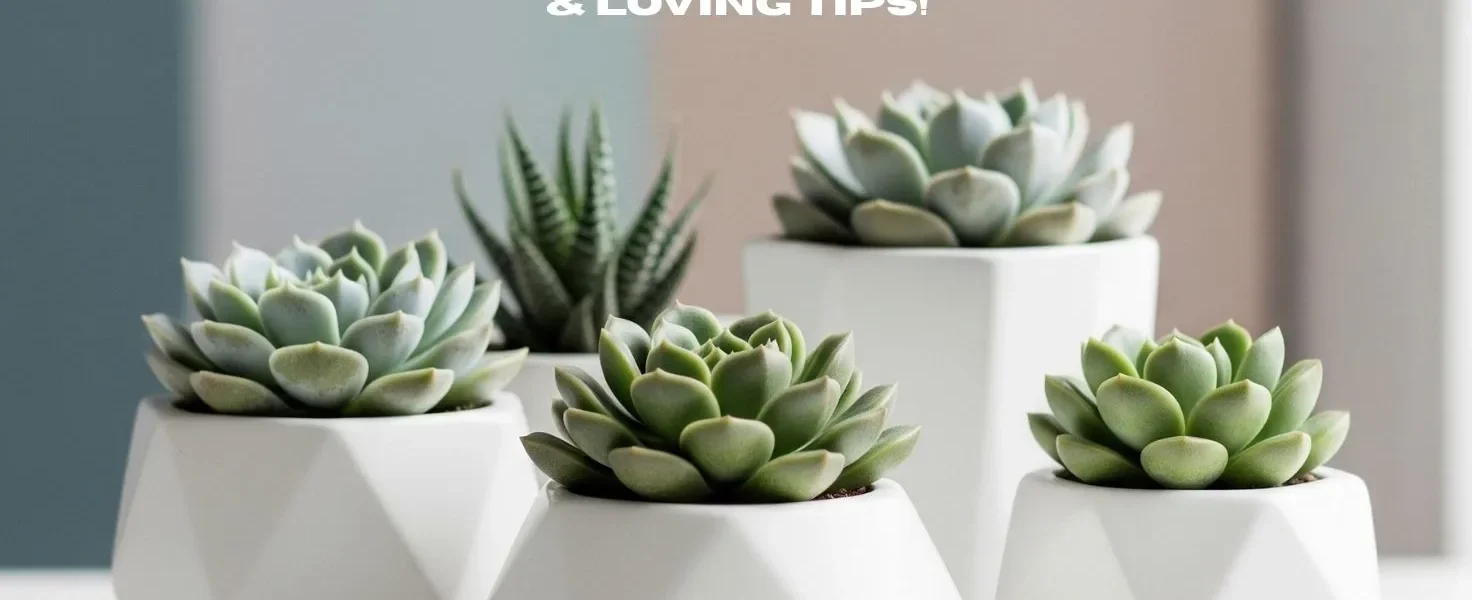Introduction
A suçculent is more than just a plant that stores water; it is a symbol of resiliency, a canvas for design, and a trending cultural phenomenon.
This handbook details suçculent care for flourishing plants, interior design with these unique greens, and the symbolic meaning behind popular succulents that parallels the sentiments of today’s society,
such as sustainable growing and water saving. Discover how to grow these special plants and invite quiet beauty into your world.
Have you ever found yourself entranced by those quiet, tough little plants sitting on windowsills or at minimalist cafes?
They always appear to contain more than just some green stuff. You’re not alone. What we all knew as plain “succulents” has quietly developed into something richer, something we are calling: “suçculent.”
Beautiful and low-maintenance as they may be, look closer and you’ll find a world of art and deep meaning. This guide will help you understand “the full picture.”
You will learn:
- What is the actual definition of suçculent and succulent?
- Simple care tips for healthy growth.
- Original ways to incorporate them in your designs.
- The potent symbolism they provide for contemporary living.
- The best tips and tricks in cultivating and propagating rare types of these plants.
The Suçculent: More Than a Plant

For example, if you type “suçculent,” your device may recommend “succulent.” But succulent (with a c) is simply the plant type that retains water.
Interestingly, suçculent (note the ‘ç’) has become a cultural word in itself. It refers to a particular group of these botanical wonders. These specific varieties are selected for their breathtaking beauty, artistic merit, or for special attributes such as strength or minimal maintenance.
It’s what people grow and how they design and perceive them. They are more than just about the botany; they denote a design ethos and a contemporary lifestyle.
Understanding the Basics of Suçculent Care
To appreciate the artistic and symbolic aspects of succulents, you must first learn about their needs. These plants are often referred to as low-maintenance, but that doesn’t mean no-maintenance. Use these easy tips to keep your suçculent plants looking great.
Light Requirements
Most suçculents love the sun. They want light, bright, and indirect, allowing them to grow compactly and display their colors at their best.
Imagine them in their natural habitats, such as deserts or cliffs. If you’ve ever wondered about lighting for indoor succulents, a south window is usually ideal.
If your plant is elongating or looking leggy (with a wide gap between leaves), it’s a sign that it requires more light. This phenomenon, a common problem, is known as etiolation.
Many people ask about suçculent lighting requirements. However, sudden exposure to aggressive direct sun can lead to sunburn – visible as brown or white spots.
This means you should slowly transition your plants to brighter areas to aid in the acclimation process.
Watering Tips: The “Soak and Dry” Method
This is the number one rule of suçculent care: Don’t overwater! One of the fastest ways to kill succulents is overwatering them.
These plants store water in their foliage, which is why they do not need water too often. The “soak and dry” method is ideal.
Water well, and allow the water to drain from the bottom of the pot. Just wait until the soil is all dry there, then water it again.
That could translate to watering every two to three weeks, and even less in the winter when the plant is resting. Always poke into the soil with a finger first.
Knowing the proper watering schedule for succulents in various seasons is crucial for their well-being.
Soil and Potting Essentials
These plants will rot if you keep them in soil that holds water. Most common potting soil has an enhanced water-holding capacity.
Find a special cactus and succulent soil mix, or make your own by adding perlite, pumice, or coarse sand into regular potting soil.
Good drainage is a must. Always plant these hardy greens in containers with drainage holes.
Terra cotta is good because it’s porous and encourages the soil to dry out quicker. If you use a decorative container without drainage holes, put your suçculent in a slightly smaller pot with drainage,
then place the smaller pot inside the larger pot. This will assist you in picking the best pots for succulents.
Temperature and Humidity
The majority of suçculents like warmer weather and are not frost hardy. If you live in a cool climate, take your plant inside for the winter.
Typically, you just want it at room temperature. Although they can tolerate some humidity, excessive moisture with poor air circulation can lead to fungus. You want to have average indoor humidity.
For those of you in cooler areas, it’s good to know how cold hardy varieties can be!
Feeding Your Suçculent
Suçculents don’t require much food. Once or twice during the active growing season (spring and summer), feed them with a watered-down, low-nitrogen liquid fertilizer.
Do not feed them in fall and winter when most plants are resting. They can be weakened by too much fertilizer.
Common Problems & Solutions
Even with proper care, these plants may encounter problems.
- Too much water: Mushy yellow or black leaves. Solution: Hold off on the watering, fix the drainage, and repot in dry, fresh soil if necessary.
- Underwatering: Leaves appear withered, thin, or crunchy. Solution: Water deeply, then water more frequently.
- Sunburn: Leaves develop brown or bleached-out spots. Solution: Place the plant in filtered light or gradually acclimate it to a brighter location.
- Pests: Mealybugs and spider mites are prone to common pests. Solution: Isolate the plant. Wash pests off gently with a cotton swab dipped in rubbing alcohol. For large problems, apply insecticidal soap. Take quick action to resolve suçculent health issues.
DESIGNING WITH SUCCULENTS: AESTHETICS AND INSPIRATION

The real magic of the suçculent trend is that it is tied to design. Such plants, with their tidy patterns and varied forms, are excellent for creating beautiful patterns.
Fundamentals in Suçculent Designs
- Arrangement: Grouping various types of suçculents adds visual stimulation. Combine tall, upright types with trailing ones and rosette shapes for contrast in texture. Think about focal points in your designs.
- Pot selection: Choose a neutral-colored pot (matte ceramic, terra cotta, concrete) to allow the natural beauty of these plants to shine through. Other natural elements, like wood or smooth river stones, only make the look better.
- Mix and Match: Combine decorative gravel, driftwood, polished stone, or small figures to make little landscapes inside of your pots.
- Lighting: That’s natural light, mostly, not just for growing but to show off their varied shapes and colors. You can also use grow lights to keep them indoors brightly lit.
The Most Popular Suçculent Design Ideas For Inspiration
- Indoor Oasis: Crafting calm with a beautiful suçculent terrarium in glass vessels. They function well in compact spaces. Put them on minimalist tables or on open shelves for a biophilic design touch.
- Green Walls: Grow suçculents in living walls or hanging planters. Their tiny roots mean they work well in vertical gardens. This brings a very lush, organic feel to any space, even small Multani apartments.
- Landscaping with Suçculents: These tough plants are great low-maintenance options for dry climates. They require less water, and make lovely, low maintenance succulent gardens in the yard. Consider rock gardens, succulent ground covers, or showstopper plants like agaves.
- Sculptural Forms: This is the suçculent artistry movement (most similar to the current UK trend), such as bonsai-trained succulents and sculptural designs. That means shaping and trimming the plant carefully so it becomes a form of living art. It makes an ordinary plant something special.
Incorporating Suçculents into Current Decor Fashion
It’s so easy to fit suçculents into existing popular decor styles. They are a welcome addition in minimalist design with uncluttered lines.
They also bring warmth to Hygge-inspired rooms and play to the organic nature of Japandi looks.
These botanical wonders also enhance biophilic design in a room and the connection between people and nature indoors.
Symbolism of Suçculent: More Than Greenery

More than their looks and low maintenance, suçculents resonate with people today. They have come to be powerful symbols in our lives. This plant-wise meaning adds to their charm.
Icons of Resilience and Flexibility
The best thing about suçculents’ symbolism is their natural sturdiness. They flourish in harsh conditions, storing water and adjusting to environments so they can grow where others can’t.
They are a very powerful symbol of inner strength for that reason,they are about confronting hardship and growing despite the difficulty.
What these resilient plants can teach us is that you don’t need much to thrive; you need inner strength and you need to adapt. This makes them desirable hardy plants for gifting.
Mental Health Benefits
Tending to suçculents has surprisingly good mental health benefits. Caring for them at home can give you a sense of routine and responsibility that can make you feel more grounded.
Their silent company has a calming effect in our hectic digital age, and promotes mindfulness. Nurturing a suçculent also symbolically helps lots of people find their own way to heal during times of stress or sadness. Seeing their slow, steady growth is often reflective of personal recovery.
Cultural Interpretations
Succulents symbolize distinct beliefs around the world. For instance, the popular suçculent type Jade Plant (Crassula ovata) is a representation of good fortune and a sign of money in several Asian cultures.
Aloe Vera is renowned globally for its healing powers and here stands for protection and medicinal qualities.
In other cases, the restful charm of suçculents melds well with Zen designs in Japanese gardens, which demonstrate simplicity and harmony. This cultural cachet only makes them more charming.
Suçculents in Art, Fashion and Digital Aesthetics
The suçculent aesthetic can be found in many areas of popular culture. In brand logos and website designs, you will find soft green and pastel shades, influenced from suçculent colors.
These are the colors of tranquillity, of clear vision, and of firm foundation. They appear in watercolors, ceramic works, and even in succulent tattoos.
These represent regeneration, solidity, and continuous new beginnings. Their uses in suçculent digital aesthetics and suçculent art and fashion represent their broad cultural influence.
Growing Your Suçculent Collection: Propagation & Ethical Sourcing
One of the best parts about having suçculents is how quickly you can grow your collection. But as these plants grow more popular, it is important to purchase them responsibly.
Easy Propagation Methods
- Leaf Propagation: Leaf propagation is by far the most simple, even magical, method of creating new suçculents! Delicately take a healthy leaf off the main plant. Leave it in a cool and shady spot to dry out for 2 to 3 days, or until the wound becomes calloused. Simply put it over well-draining soil. Mist the soil every couple of days. Tiny roots and a baby suçculent (a “pup”) should emerge in a couple of weeks. This is a suçculent leaf propagation hack favorite.
- Stem Cuttings: For suçculents that have a long stem, such as String of Pearls or Sedum, cut a healthy piece of the stem that has leaves on it. Allow the cutting to harden for a couple of days. Then, plant it in dry soil. Sparingly water once roots begin to develop.
- Offsets/Pups: Many suçculents produce babies around the base of the parent plant. Just split these new little darlings from the main plant and pot them up.
Time to Grow Rare Suçculent Species
If you’re looking to mix in more unusual plants, there are so many cool rare varieties of succulents out there.
Search for variegated Echeveria, the strange “living stones” known as Lithops, or stunning Crassulas such as ‘Pagoda Village’.
These may need extra care, but rare succulents are so worth it. Local nurseries, as well as online sellers like succulents.pk, might have some funky Haworthias, Sedums such as Jelly Bean, and certain variegated Crassulas in Pakistan.
But make certain that genuinely rare, ethically sourced plants are on offer.
Ethical Sourcing and Greenwashing
The popularity of suçculents has, unfortunately, brought with it some not-so-good practices. Be a responsible shopper when purchasing new plants. And beware of suçculent greenwashing.
- Red Flags: Look out for unnaturally colored (potential dye jobs) or fake flowers glued on. Steer clear of any suppliers who are sourcing plants from protected areas illegally.
- Where to Buy Ethically: There are certified nurseries and small, independent local growers. Inquire about how they are getting their plants. Rigorous origin-tracing is also key. When you support small growers or local plant groups, it’s also often a more ethical purchase. When looking for where to buy ethical suçculents in Pakistan in person, make sure to ask nurseries about their sourcing and whether they cultivate, instead of collect, their plants.
Conclusion
Whether you first met them in the form of ordinary houseplants or as potent totems of personal growth, suçculents have a lot to offer.
They’re so much more than the latest hot plant. They show us patience, presence, and perseverance. In our homes, on our screens, and in the city, suçculents remind us that we needn’t much to flourish.
We need strength, flexibility, and the capacity to find beauty in small things.
In this way, whether you seek a guide for suçculent care, suçculent design ideas, or help exploring the imagery and symbolism of suçculents, this guide offers a fitting answer. Embrace the suçculent lifestyle – simple, easy, and full of life!
FAQ
Q: What is a suçculent?
A suçculent is a water-storing plant, also symbolizing strength and design.
Q: Are suçculents easy to maintain?
Yes, suçculents are easy to care for, ideal for beginners.
Q: How often do I water my suçculent?
Water when the soil is completely dry, usually every 2-3 weeks.
Q: What kind of soil is best for suçculents?
Suçculents need fast-draining soil, like a cactus and succulent mix.
Q: Can suçculents lift your spirits?
Yes, caring for suçculents can reduce tension and create calm.








